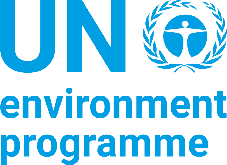Taking action to improve air quality has never been more critical than it is today. Recent studies have suggested that living in more polluted areas can increase the likelihood of severe outcomes from COVID-19 compared to living in less polluted areas.
Despite the immense challenges that the COVID-19 pandemic has brought to Los Angeles and worldwide, Los Angeles has kept up momentum to meet the moment, and turn challenges into opportunities.
“Unhealthy air doesn’t stop at national borders or city limits, nor does COVID-19 –– and each demands our immediate attention and bold, clear action,” said C40 Chair and Los Angeles Mayor Eric Garcetti. “This first International Day of Clean Air is a clarion call to meet these intersecting global challenges, save lives by reducing emissions, and deliver on our promise of environmental justice to families on the front lines of both crises.”
In recent months, Los Angeles has led on clean air actions that deliver on the City’s commitments through its Green New Deal and the C40 Clean Air Cities Declaration as well as Mayor Garcetti’s Executive Directive 25, which accelerates many of these actions, all while adapting to the needs of Angelenos during this unprecedented time.
In early August, Mayor Garcetti announced the completion of new dedicated bus lanes and protected bike lanes in some of the city’s most travelled streets in the downtown area. In total, the Los Angeles Department of Transportation (LADOT) has installed close to 50 miles of new bike lanes since the COVID-19 crisis reached Los Angeles in March.
The city also deployed its first, fully operational electric bus for one of the busiest bus routes – the G Line. This is the first of 40 electric buses that will be put into service on the route by the end of the year. Beyond the 40 new buses for the G Line, Metro is expected to receive an additional 105 electric buses over the next two years.
Earlier this year, Mayor Garcetti celebrated LADOT’s purchase of 155 electric buses for the city’s bus fleet. The record-breaking order includes measures to make LADOT’s bus fleet entirely emissions-free by the opening ceremonies of the 2028 Olympic and Paralympic Games.
Since the COVID crisis 24 miles of city streets have been designated as “ Slow Streets ”, where Angelenos can safely walk, bike, roll and get some fresh air while remaining physically distanced. While COVID-19 has reduced the number of vehicle miles travelled in the city by between 40-50%, many of LA’s most economically vulnerable and most susceptible to the virus, still depend on public transport and alternative modes of transportation to travel to their jobs as essential workers. The street and transit improvements made during this time is a matter of equity and safety and improves climate resiliency and air quality in LA.
In addition to advancing mobility, transit and vehicle miles travelled-reducing initiatives, Los Angeles is focused on improving its understanding of air quality, while utilizing data to educate and raise awareness of air quality challenges and opportunities in the City.
A project called Predicting What We Breathe: Using Machine Learning to Understand Urban Air Quality was formed in partnership with Cal State LA, OpenAQ, SCAQMD, C40, NASA, and the City of Los Angeles through a $1.5 million NASA competitive award. By fusing air quality data from satellites and from ground-based monitors, the city is using machine learning to develop algorithms that help the city understand and predict urban air pollution patterns and quantify the impact of its clean air projects. Working with C40 and NASA, this project will share these algorithms and data with other global cities.
Los Angeles also continues to advance hyper-local community air monitoring projects, most recently deploying a pilot project in the community of Watts that uses low-cost sensors in city’s street lights to improve tracking and understanding of neighborhood-level air quality. These community-based projects aim to engage vulnerable populations including children, seniors, people of color, and those with already compromised respiratory systems and raise air quality awareness and education.
Through these actions, Los Angeles is not only advancing its various climate and clean air targets and commitments, but it also continues assessing new opportunities to further accelerate actions to meet the urgency that the climate emergency and air pollution driven public health crisis demands.
This story was submitted by the Office of Los Angeles Mayor Eric Garcetti, United States. Non-UNEP stories highlighted here have been communicated to the United Nations Environment Programme (UNEP) by external partners in support of the International Day of Clean Air for blue skies and are shared here as a courtesy. UNEP is not responsible for the content. Inclusion here is not meant to be construed as an endorsement of the stories or the content therein.
